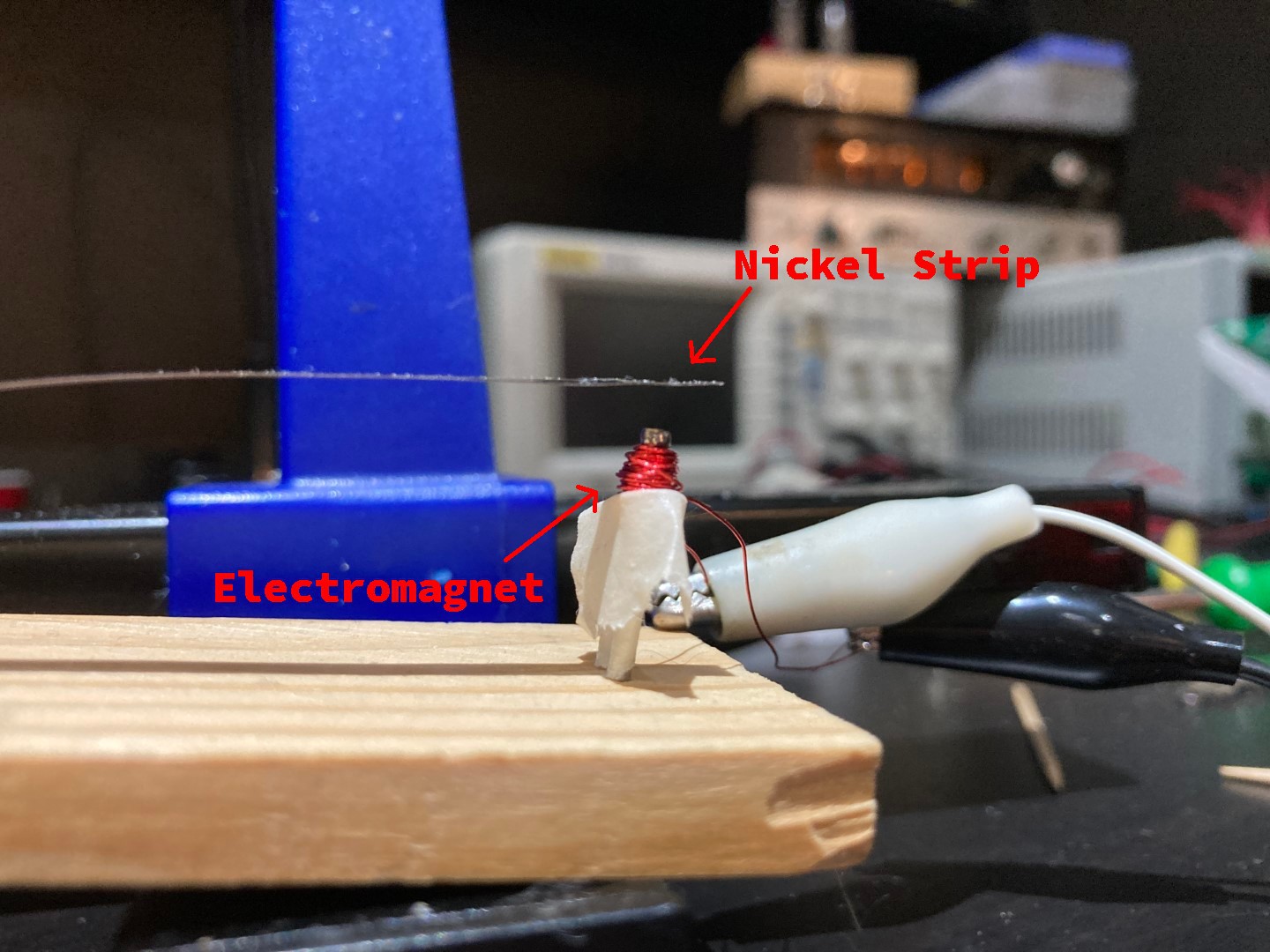Note: I'm writing these updates a little while after I actually completed each update, so I think this update was from around May 22.
Anyway, the first thing I needed to figure out was how to get something that is very small (2-3mm diameter) to move and eventually to control its position. From the preliminary research I performed, it appeared that MEMS mirrors are electromagnetically or electrostatically driven. (I later found that one company uses bimetallic strips to thermally deflect their mirrors as well). The electrostatic actuator idea was set aside after some quick electrostatics calculations and the decision to keep the operating voltage as low as possible. With electromagnetic deflection the only other choice, I built up a small test rig:

As seen above, the rig is a nickel strip which is actuated with an electromagnet. The hope was that if this worked, then it might be possible to polish the nickel to a mirror finish, producing a 1-axis mirror.
Throughout the testing of this setup, it quickly became apparent that this setup had a few flaws:
- The nickel strip liked to bounce a lot when the electromagnet was turned on or off.
- The amount of current needed to drive the tiny coil was causing it to heat up very fast (and start smoking in one instance).
- The distance between the nickel strip and the electromagnet had an impact on the amount of attractive force, meaning that motion was highly nonlinear.
Some of these issues could potentially be resolved:
- The strip's bounce might be able to dampened through the use of a hall sensor and a feedback loop to a microcontroller. (Although I did not have any hall sensors on hand)
- The coil current and heating issue could be resolved with a larger coil.
These potential improvements ended up not being implemented, however. The magnetic field idea still seemed promising, but it was not until trash day the following week that I had a breakthrough...
 Ray Clemens
Ray Clemens
Discussions
Become a Hackaday.io Member
Create an account to leave a comment. Already have an account? Log In.